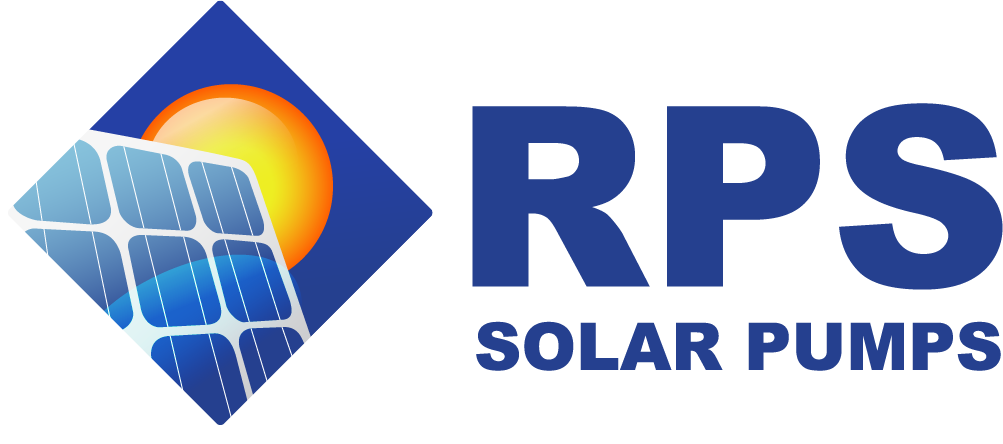Put the Sun to Work™ on your farm
Your Yield and Profits depend on Reliable Water
You can’t take any chances with cheap unreliable pumps or siphoning off regulated water sources. Your gas hauling generator days are behind you.
More and more farmers and growers are switching to effortless (and quiet!) solar for their water pumping needs. And simple backup options give you peace of mind your plants will have water when they need it.
- See Increases in yield/production with better regulated drip
- Effortless automatic watering
- Easy calibration of gallons per plant
- Water is as important as soil and nutes
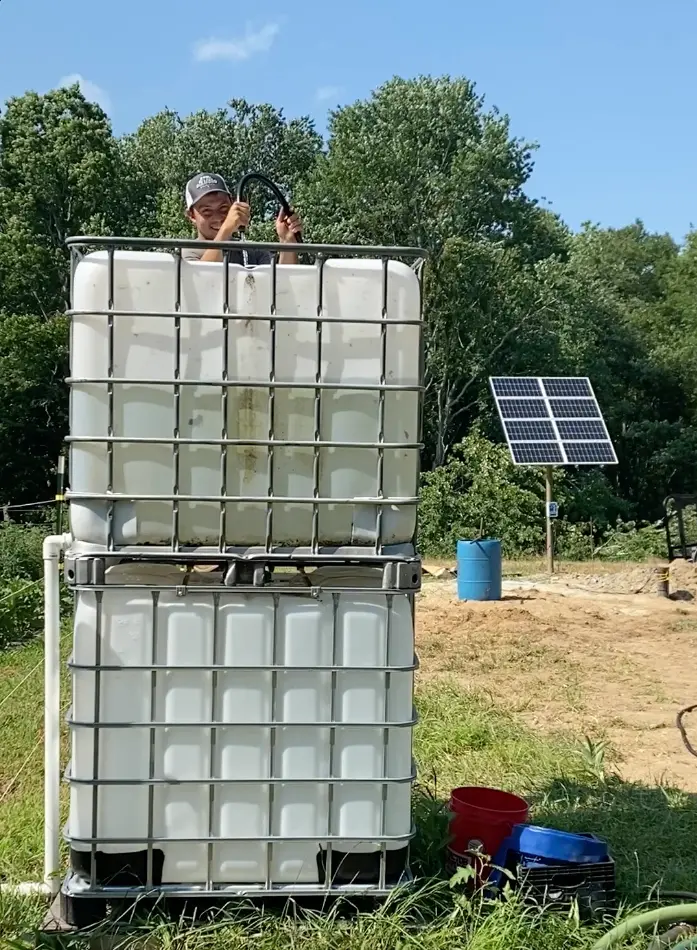

100% Water Assurance Guarantee gives you the peace of mind that your investment in a great product will get you reliable water.
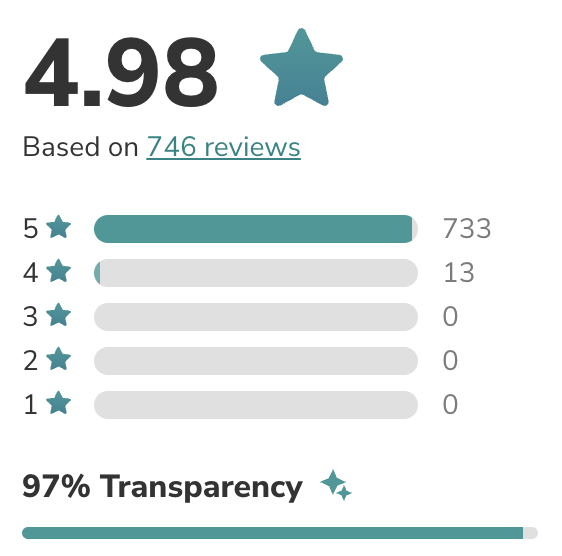


The world’s first DIY Success Company™, every RPS customer gets a special non-commissioned team to help design a solar pump system, ship it to your doorstep, then back up your DIY skills with USA engineers to make sure you succeed in getting water! 100% of the time!
We have two wells using 100% solar power to irrigate 4 cultivated acres of fruit and nut orchard crops and it is the BEST THING EVER!!! I waited several months to leave this review and now I am a raging fan. Thanks to RPS we can operate completely off-grid to grow food in a regenerative sustainable way.
– The Farm Up Lost Creek, Farmer Scott, OR
This set up still delivers water on overcast days at a reduced rate. Technical support is very helpful, kind and know the products thoroughly. This is a no brainer for areas that have limited access to electricity and would be awesome for off grid systems. – Cherie D, AR
RPS is on a very short list of American companies that do what they say they will do. Thank you.
– Mark L, WA
“There were 3 of us, in our little off grid area, who got wells drilled in December of 21. We temporarily installed, as in straight to a frost proof spigot, our pump system in January 2022. We did a permanent install in August. We helped our friends install theirs in April. The other family didn’t go with an RPS pump and let the driller tell them what they needed. It has cost them thousands and they still don’t have water from their well. We tried to tell them. I always recommend RPS whenever anyone asks about a solar pumps on social media. Big fan here.” – Beth E., Montana
Off-Grid Irrigation
Creating a pressurized water system for off-grid irrigation
Two of the major factors in designing an irrigation system are pressure (psi) and flow rate (Gallons Per Minute, GPM). When you open the hose bibb to water your lawn, the water is already pressurized and comes out at between 5 and 10 GPM. In towns and cities this is part of the municipal infrastructure, but off-grid we must pressurize our own water systems using elevation or a pump – submersible or surface (traditionally coupled with a pressure/bladder tank in a well-house or basement).
RPS can help with it all. Well Pumps, Transfer Pumps, Pressure Pumps, Dewatering Pumps, Soaker Hoses, Drip Lines, Sprinklers.
RPS Irrigation Customers have saved 4132 miles of power lines and gotten back about 2000 hours of peace and quiet without a loud polluting generator. Our solar pumps specialists will help you design a system that integrates your well, water tanks, special plumbing, and timers for seamless water delivery anywhere on the property.
Figure out what size pump you’ll need for your operation here. Kits ship Fedex to all 50 states or pickup in Northern CA.
Give us a call and chat with an engineer and we can be sure you’ve got the right system. Call 888-637-4493 or email [email protected]
How Solar
Pumps Work

When the sun shines on the surface of your solar panels, the movement of electrons generates DC power which is transferred through attached wires to the pump controller.
The pump controller is the brains of the system and with sophisticated technology and sensor inputs, it turns the submersible motor and drives the pump to push water against gravity to the surface.
Solar pumps are sized by calculating the total vertical feet they’ll need to push water, the pressure they need to generate, and the total water required each day.
Start sizing your pump now
Our goal is to arm you with the equipment and knowledge to take control of your water and save a fistful of money doing it. RPS Irrigation Solar Pump Kits are for every kind of farmer – from small gardens to large farms and homesteads.
Common Irrigation Pressures
The relationship between pressure in pounds per square inch (psi) and head (in feet) is especially relevant when sizing pumps for irrigation. Each psi is equivalent to 2.31 feet of head. In other words, if you had a water column that was 231 feet tall, you would have 100psi if you opened a valve at the bottom. Common Household pressure is between 35 and 60 psi. As different types of irrigation require lower pressures, regulators are used to lower this pressure for calibrated water output. The Total Head for a pump is calculated by adding the height the pump needs to push water and the head needed to create pressure. At right are examples of common irrigation types.
Ensuring Proper Water Volume
In addition to the pressure of the water, each different type of irrigation requires certain volumes as well. A large lawn sprinkler needs more water then drip irrigation with a single emitter. When the required flow exceeds the volume supplied, the common practice is to break an irrigation system into multiple Zones so there will still be enough GPM volume for each.
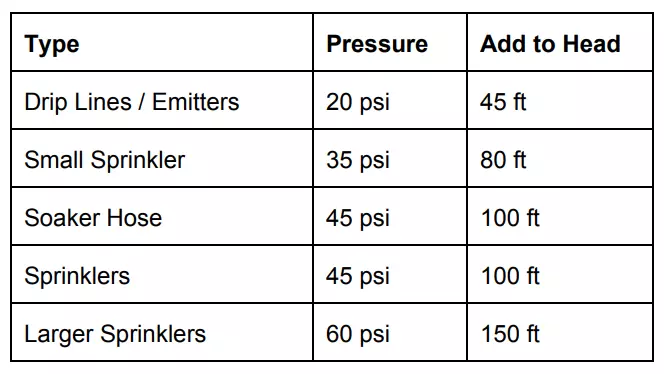
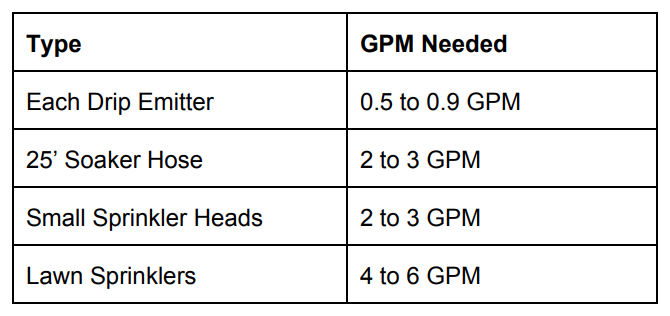

Diagrams of Popular Installs
Pumping into pressure tank
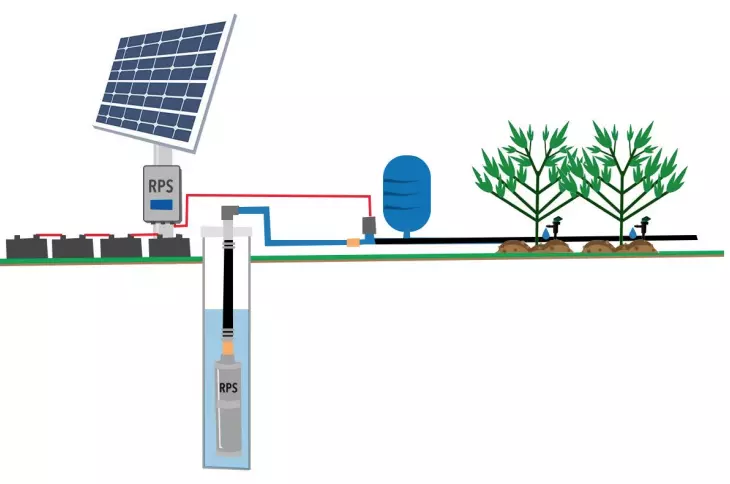
Batteries and a reverse action pressure switch are used to create 24/hr pressure. The pressure switch will wire to the RPS Controller and when the pump fills the pressure tank to the proper psi, it will turn the well pump off. Whenever there is a pressure drop (open valve/timer) the pressure switch will activate the pump to refill the tank and keep the pressure up. The following table shows which RPS Pumps Systems are best suited for Well Pump Pressure. As the head increases (deeper well, higher pressure, steeper hill, etc) generally the volume any pump can generate decreases along its pump curve.
Pumping into Storage + Booster Pump
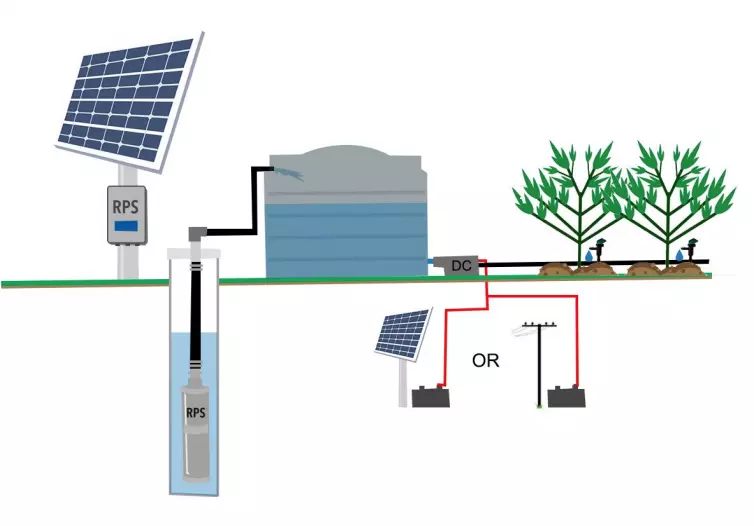
Also a popular technique, this installation method involves a battery powered booster pump to pressurize the water from a storage tank. The pump has a built in pressure switch that will turn itself off automatically when valves/timers are closed and back on when valves open. The battery for this booster pump can be charged with a solar panel and charge controller or with a standard AC battery charger.
Pumping into Elevated Tank
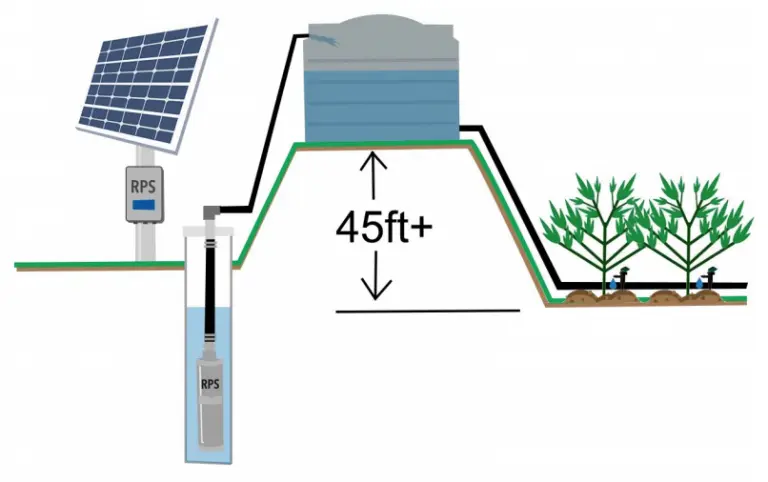
This installation is the simplest way to get 24hr water pressure for irrigation. (if you have elevation on your property) Install plumbing from well pipe to your elevated tank with a check valve on the pump to ensure the water doesn’t siphon back down into well from tank. Each 2.31 ft of elevation the tank has above your plants gives you 1 psi. For drip lines you need at least 20 psi (45 ft tank elevation) and for sprinklers 45 psi (100 ft tank elevation).
You can install yourself in a single afternoon. No scheduling expensive installers and having them get lost. No strangers walking around your land. Pump while enjoying peace and quiet at the same time.
Peace of mind knowing RPS engineers are ready to pick up the phone if you need us. Industry-Leading Warranties and the RPS Water Assurance Plan to make sure you have the right pump, parts, and tools for a fast and easy install.
SKILLS NEEDED
- Basic plumbing with teflon tape, screw fittings, hose clamps
- Basic wiring for heatshrinks over butt splices and standard terminals
- How-to Videos for the entire process here
Got some other master plan?
Give us a call and chat with an engineer and we can be sure you’ve got the right system. Call 888-637-4493 or email [email protected]
RPS Kits Include…
RPS Controllers
Multiple Sensor Inputs
Tank & Well Low sensors
Variable Frequency Control
Cycling Protection Timer
Exterior Shut-off Switch
RPS Solar Panels
UL1703 Certified
Per Intertek ETL
Nationally Recognized to Hail, Wind Requirements
IEC 612512 / IEC 61646
*Comply fully with NRCS
2 Year Comprehensive Warranty
30 Day Money-Back Guarantee
Engineering Phone/Text Support
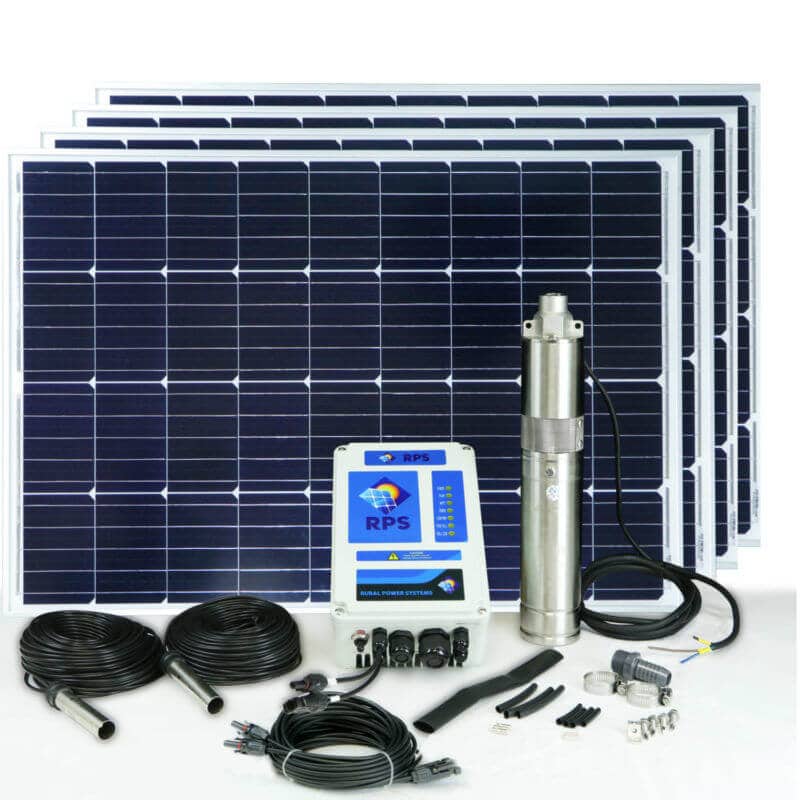
Includes the BEST step-by-step installation manual you’re ever used. Seriously. You’ll want to frame it. 22+ pages of full color to arm you with knowledge and give you a reference on the basic wiring, plumbing and mounting required.
RPS Motors
Slow Start/Stop
Brushless Motor Tech.
Permanent Magnet Efficiency
Rated for Continuous Operation
RPS Pump Ends
Serviceable in the Field
Helical & Centrifugal Technology
Lifetime Rotor Warranty
Stainless Steel Body
Plumbing connectors
Controller mounting hardware
Low-water & tank shut-off sensors
Waterproof splice/heatshrink kit
Before RPS, upgrading to solar powered pumping required you to…
#1 – Pay top dollar for a Contractor to buy and install everything for you
#2 – Piecemeal a system together on your own with components found online
Most people are looking for a way to avoid the high cost of #1 but want to avoid #2. RPS provides a happy medium between the two. DIY+RPS. A combination of your do-it-yourself skills and tools with RPS quality parts and RPS engineers on the phone, text and email to back you up – a teammate in your solar pump planning and installation. Saving your time and your money is what we do at RPS..
How do I know which pump I need?
We have built the industry’s best Pump Sizing Guide which is online for convenience. Once you add details about your well and water use, it will recommend a pump. If you’d like, we’ll also have an engineer call you and make sure we have the right size selected.
Can it replace my windmill?
Yes indeed. This is more and more common every year as solar requires so little maintenance and windmills, well, we all know the work and climbing that windmills involve! Just be sure to check the casing diameter of the windmill well first. We need at least 3″ ID. If your tower is staying up, generally you can mount to one side of this. See video comparing solar to windmill water volume!
How do I know what my static water level is?
Often times an old well report will have a scribbled static water level on it. Its the level of the water when at rest (not being pumped) and can change from season to season, year to year. Some wells fluctuate more than others and depending on the area, the static level can be similar among neighbors with similar depth wells – but not always. Static water level is used to calculate head for pump sizing so its nice to have. If you have no idea, first look down the well and see if you can see water, if not you can drop a half-filled bottle on a fishing line (or long 500ft measuring tape) and feel when it hits the water. That is you static water level – the number of feet from the surface to the water level.
What’s included in your kits?
So much! Customers can’t believe how much we provide and the time it saves in the long run. Once you find the right pump size, the product detail page will give you a full breakdown of what is included. All our kits come with our great RPS pumps, full variable speed controller, sensors, solar panels, wires, plumbing connectors, splice kits and more. In addition to the basic kit, we offer what we call the ‘Turnkey kit’ which is great if you’re a long way from a hardware store and want to make sure you have everything onsite! (it includes mounting hardware for the panels, pump wire, flexible poly pipe, well seal assembly, safety rope etc.). Plus there’s FREE SHIPPING within the USA when you purchase a pump kit, so don’t worry about shipping costs. If you have some of the parts already, we’ll help figure out what you’re missing. For first time installers, the Turnkey kit is popular and generally recommended by our team.
Can I install myself?
We are constantly impressed by the skills and grit of the American rancher. Over 90% of our customers install their solar pumps themselves without a hitch. This is a testament to the rural do-it-yourself attitude, but also our company’s commitment to making our systems easier and easier to install year after year. With a detailed all-color User Manual walking you through planning and installation step-by-step and dedicated engineers by the phones to answer questions as they come. All examples of our steadfast commitment to our customers and the humans, plants and animals our pumps serve.
Can I get more Technical details?
Yes. We love to talk about all the specs of our pumps. Call and ask for an engineer! 888-637-4493
Why RPS? Where are you located?
RPS is a family-owned company of laser-focused mechanical, electrical and software engineers that live and breathe solar pumping almost every hour of every day. We have sales offices in a number of states now, but our main shop has moved to an Ag town in California (we do get poked fun of for this!) and our warehouse to move there shortly. We put great time, money and thought into our kits – including parts and components to make installation a breeze. Our reading materials, manuals, videos and diagrams allow customers of all skill levels to install a solar pump successfully the first time. As has become famous, we also offer a direct line to talk with real humans! ..our actual pump engineers for asking questions, helping troubleshoot, or planning for installation.
How reliable are your pumps? How long have you been in business?
We started development of our first solar pumps in 2012 and after much testing and refinement, we launched our first pump for purchase in 2014. With all our pumps still in the field, and four major winter upgrades from our engineering team, we are confident we have the highest quality pump that you can install yourself on the market, and the only comprehensive kit designed to make it easy. We believe our customers’s actions speak more loudly, with the majority of sales this past year coming from happy returning customers and their referrals.
How do you compare with other pump brands?
Consumers historically have had lots of choices when it comes to AC-grid powered pumps. For solar there are far fewer options because it’s a much smaller market and frankly the big European corporations in their ivory towers just don’t care. All these ridiculously expensive pumps must be installed professionally at great expense or their warranty is void. We focus ONLY on solar and have iterated and developed much faster than these European corporations making our systems more reliable on US soil. Cutting out multiple middlemen in the process has made our systems cheaper for our customers without sacrificing quality. Like in most industries we also compete with lots of cheap products, both from the US and from Asia. Cheap brushed motors, flimsy plastic diaphragm pumps, and fake warranties are making a bad name for solar. We have stayed strong and maintained our high quality knowing that integrity, quality and reliability win in the end. Our reputation for our commitment to our quality products, warranty and honest, friendly and respectful support is why more customers continue to trust RPS.
Friendly-looking dogs on the website. What are their names?!
Elsa is an Icelandic Shepherd and she loves swimming in cattle troughs. Especially when the water was pumped with solar power!! Roux is a mutt and hangs out on the forklift at the warehouse and at her off grid cabin chasing gophers.
We hope you’ll read our ‘Pledges’ below and a letter from one of our owners to better understand who we are, and the product we continually improve and stand behind with great pride. We are honored and blessed to have such great staff and customers all over this great country.
Where should I locate my Solar Panels?
Ideally within 50 feet of the well so there isn’t a huge voltage drop over the distance. The ideal sites are in full sun all day without shadows. You’ll want the panels to face South. The optimal ‘Tilt’ angle of the panels is based on your latitude. Our detailed user manual provides more details to optimize your system. We also have some additional mounting information, photos & diagrams here. (Over 500ft is fine, just need thicker gauge wire or more solar panels)
What are the panel’s specs & dimensions?
Our great RPS Brand 100 watt panels are about 26″ x 37″ x 1 1/4″ and usually come in sets of 2 protected with foam on all sides. They weigh about 17 pounds each and have 4 mounting on the back side on the long sides but the frames can be mounted in a number of different ways without these holes as well.
What is the best way to mount the solar panels?
There are a few different styles of mounting and the best options vary customer to customer based on the installation site. If you have a south facing roof or wall on a nearby building, the wall mounts and roof mounts are popular. Many customers use aluminum mounts on a pole or a windmill or a frame of steel pipe or 2x4s. More detail and mounting photos here.
Why 100 watt panels instead of 200+ watt panels?
We supply the highest quality mono crystalline solar panels currently available on the market. These use some of the highest efficiency solar cells available, meaning they turn the most amount of sunlight into electricity. The panels are rated for a minimum of 25 years with minimal power reduction. 100 watt solar panels are an optimal size for mounting with 1 person and easy to ship without damage. Larger 200+ watt solar panels are easily damaged in shipping and are usually too heavy/awkward to lift and install by one person. Our goal in everything we do is to make it easier to install solar pumps. At the end of the day, they have the same performance at their larger counterparts and have the benefit of cheaper replacement cost in case one gets damaged.
What maintenance is required?
Just keep the panels accessible to the sun – free of leaves, pine cones and snow! Use something soft (like a fabric mop or car squeegee) to clean them off. Not your metal rake 😉 You can see a video on our YouTube channel on this!
Are the connecting wires included?
Yes. Everything you need is in the kit. There are snap-in connectors for the panels. The panels in your system may be designed to be wired in parallel or in series. Both are easy to install and all the wiring is included.
Can I add more panels later?
Yes. Everything is designed to be very modular with RPS systems. You can easily add more solar panels for the winter or for increased production in the morning or evening hours. Our systems are designed to get you at least 6 hours of pumping a day – northern latitudes a little less and southern a little more – so there is more solar in each array than the rated power of the pump. More is generally better as long as they are all wired in the proper series/parallel and we have diagrams to make this really easy.
What do I do to Ground the solar panels?
Grounding is covered in detail in the user manual but generally we recommend a grounding rod and bare copper wire from the panels and controller (often connected – a single rod is recommended) to get both these components to Earth Ground.
What about wind and hail?
Common questions especially in Texas and Oklahoma. The truth is it’s really very rare that there is hail damage to the thick impact resistant glass of the solar panels. Some customers tilt their panels a little steeper if they are in hail prone areas to make it a little more of a glancing blow with the hail. This goes for wind too and a good solid mount should be constructed. Our RPS Brand mounts are rated to 91mph winds and 1″ of ice. With that said we only get a few panels a year damaged by any weather out of thousands of customers.
Can I use my existing solar panels?
The answer is ‘maybe’ as long as we can get the right voltage and overall power. Be sure to talk to an RPS engineer first to make sure. We have some great documentation to ensure the system will work properly the first time.
What are the dimensions of the pump?
The standard pumps are exactly 3 inches in diameter. (though we have 4″ pumps as well) The minimum well casing diameter for these pumps is 3.5 inches. The pump is made up of 2 parts. Our most popular models use the super-efficient helical pumping mechanism that drives the water up the well. We also carry centrifugal pumps. Beneath that power is the brushless DC motor that powers the pump. They are both in the same beautiful stainless steel housing. The whole unit is about 18 inches long. Have a windmill casing of 2.5″ or 3″ we may have a solution for you in 2019. Ask an engineer.
Can I use a 3 inch pump in a larger diameter well?
Absolutely. There is no issue using a smaller diameter pump in a larger diameter well casing. One of the main reason for a larger well diameter is increased water production. The larger well acts as a reservoir for longer pumping durations and the ability to produce a larger volume of water without depleting or drawing down the well. And no, the opposite is not true, a 4 inch pump will not fit in a 3 well casing!
What type of motor do RPS pumps use?
Our pumps use permanent magnet brushless DC motors. We wholeheatedly preach these motors compared to their induction and brushed counterparts, since you never have to replace carbon brushes and less heat is generated meaning longer and more efficient operation for years longer.
Can I add an external switch to turn on and off the pump?
Yes. With our controllers this is very easy to do using the tank overflow input. Simply wire and on/off switch to the tank high (Th, Tc) inputs. Operation will be opposite of how most switches are labeled. When the switch is open, the pump will run, when the switch is closed (short), the pump will turn off. A $1 light switch works perfectly.
How does the RPS Controller differ from a standard pump controller?
Our controller have improved upon traditional controllers with some great new technology and new features. With maximum power point tracking (MPPT) the controller monitors solar panel performance and makes adjustments as needed to the voltage and current in order to maintain maximum performance. The MPPT feature improves overall system efficiency, especially in low light, overcast conditions. The RPS Optimizer controller also features low well shutoff and storage tank overflow sensors that some customers utilize. These will save the well from running dry and prevent over pumping and wasting water. There is also a Motor Speed setting. The motor speed setting on the RPS controller is a dial that adjusts the speed at which the pump operates. The pump can be set to operate at any speed desired and can be fine-tuned up or down to the amount of water needed on a daily basis. The RPS Optimizer controller is encased in a water resistant enclosure and is suitable for outdoor use. It features water resistant wire pass-through ports on the bottom, to prevent both moisture and bugs from entering the electronics. Power and external sensor connections are made easy by the use of clamping screw terminals. Only a screwdriver is required to make the electrical connections to the controller. Dimensions are about 8 inches wide by 9 inches tall.
Can I run my AC pump off Solar?
Than answer is maybe. It’s generally not nearly efficient to do so and if you have an older pump, not as reliable. But if you can’t get a pump out of the well or prefer to keep it, get as much information about the pump and let one of the RPS engineers know. We can see if we can run your pump with our Universal controller.
What type of well drop pipe do you recommend?
We recommend 3/4″ black HDPE tubing aka “black poly pipe” for most usages. If you are making a long run, with a high volume pump, then you may wish to consider going to 1″ pipe. Both sizes are available at most big box home improvement stores for minimal cost. Be sure to get 160psi or greater as there is some that is designed for drip irrigation only. Over 300ft wells ideally will use 200psi+ pipe.
Why is flexible black poly pipe so popular?
The pipe is flexible and comes in single pieces. The main benefit is when placing the pump in the well or pulling it from the well, you do not have to unscrew sections like standard PVC pipe which makes installation much faster. (and far easier without a boom truck!)
What is the connection on the pump itself?
The Pump has a 3/4″ female pipe thread so you’ll need a coupling with a male 3/4 pipe thread to be compatible. If you’re using poly pipe we recommend a barbed end to connect to the poly pipe with a couple high quality hose clamps. (included in the kit) There are eyelets to attach 1/4″ poly rope as well so you won’t have to worry about losing your pump down the well!
Can I make a long horizontal run to a distant storage tank?
Yes, this is not a problem and has minimal impact on head/flow rates as long as the diameter of pipe is chosen properly to prevent significant loss of pressure (pressure drop) over the run. Our customers routinely make 1 mile horizontal runs. Ask an engineer if you are unsure about a longer distance but generally we recommend 1″ for distances under 1000′ and under 5 GPM. Frictional losses go up as flow rates and distances increase.
Do I need a check valve?
If you are doing a pressure system or pressure shutoff then the answer is always yes. The pump has no check valve and one is required to build pressure. If you have a really long run on the surface then adding one just above the pump is ideal. If just going into a storage tank at the well head, then often customers do not add one as it allows water to drain from the drop pipe and prevent freezing above ground. Freezing is another topic outlined on the site but general letting the water drain back is the most foolproof system without a check valve.
Can I use existing pipe and plumbing with the pump?
Yes. All RPS submersible pumps have 3/4 female NPT pipe threads, so you just need the correct fitting to adjust to your existing pipe size, available at all hardware stores.
Are the connecting wires included?
Wires to connect the solar panels together and then to the controller are included. All the wires for the sensors (low water and tank) are included as well with 100ft of wire on each one of those for your convenience and to keep splices above the water. A splice kit is included in the kit for extending your pump wire as only about 10ft is on that.
How deep should I place my pump?
This depends on the productivity of the well generally and on the water volume you want to pull each day. Lower producing wells usually drawdown more so lower pump set is ideal. If you have a high volume (GPM) rated well you can get away with only 20 feet below the surface. Your system comes with a low water shutoff to prevent the pump from running dry as well.
Generally customers get more water then they think (even pumping on cloudy/hazy days!) but its good to plan for days with less or no sun.
How else can I power my RPS system?
RPS systems can be run off solar and batteries directly, and off generators or AC power with a converter. There is also a converter for running off your trucks battery if needed.
Ho can I use batteries?
RPS systems run most efficiently using solar power alone. While it does make sense for some customers to add a battery bank (especially with low GPM wells and for household water pressure), whenever possible, our engineers do recommend pumping more water into a storage tank for overnight use rather than adding the expense and complication of batteries.
Charge batteries with the RPS Controller?
When set to BAT mode, the solar panels will charge the batteries, and the pump will run off battery power rather than solar power directly. (Controller’s Power light will
blink) There is a PWM solar charge controller inside your pump controller that facilitates charging, prevents overcharging, and prevents discharging batteries to a
damaging level. It should be mentioned that during charging, some power and voltage is lost, leading to a 15% to 25% decrease in pumping efficiency. These decreases are greater for deeper wells and higher heads.
What Type of Batteries should I use?
Batteries must be deep-cycle batteries, not standard car batteries. Deep-cycle batteries are designed to accommodate much lower continual discharges than regular car batteries and are usually sold as “marine” or “RV” batteries. Lead Acid
Batteries are the cheapest deep-cycle batteries and are easiest to find. Most customers feel Lithium-Ion batteries are still too expensive. AGM batteries are an increasingly popular option.
How many batteries do I need?
If you are adding batteries in order to pump more water than is possible in a solar day, you will need to increase the number of solar panels in your system. Add solar panels in parallel to maintain the same voltage to the controller. More batteries can also be added for greater total storage capacity, as long as they are added in parallel at the same voltage. Batteries should be at the same voltage as the Solar Panel Array. Use 12v batteries in sets or 2 in series for RPS 200 and 400 (to make 24v) and sets of 4 for the RPS 800 (to make 48v). More sets can be added in parallel as needed, but we recommend starting small and adding as needed. (If using 6v batteries, you’ll need double the number series!)
Battery and solar panel wiring diagrams are available in the user manual to make this easier to visualize!!
How long do your systems last?
Our well pump systems are designed for harsh environments – for years and years of reliable operation. The motors are brushless and rated for many tens of thousands of hours of operation. That’s hundreds of thousands of gallons of water pumped! The pumping mechanism is the only ‘wear part’ and is rated to last 5+ years without replacement. Plus, all of our solar well pumps have a two year warranty. If anything happens within 2 years, we will immediately send out replacement parts.
Who will service my pump? Parts?
The first thing you’ll do is call our friendly engineers if you have any issues at all. 99% of the time we can troubleshoot over the phone and fix the problem. In the off chance that the pump needs a new part that isn’t the helical pumping mechanism, we’ll mail it out ASAP (free if under 2 year warranty) Most of our customers swap out these parts themselves as the pumps disassemble easily. With that said, it’s only rare cases that our systems have had issues and almost all of them have been from running the pumps dry. We include a backup helical pumping mechanism in the kit so you can get pumping again quickly.
What is the Warranty?
We guarantee 85% power output of solar cells after 25 years. Plus, we offer the most comprehensive 2 Year Warranty on all our solar well pumps for added peace of mind. (yes, longer than the iPhone warranty) We believe in our products and our limited liability warranty is to protect your investment from manufacturer defects. If there are any issues with our product during the first 2 years, please contact us for an immediate replacement. Like most pumps, the impeller/pumping mechanism is the part that sees the most wear and tear and this can be replaced easily in the field with a screwdriver. We also keep many spare parts in stock and will ship them out immediately. More on our 2 Year Warranty here.
Lifetime Rotor Replacement Guarantee
Our brushless motors are designed to last for tens of years without maintenance. These motors (at the bottom of the pump) turn a stainless steel helical rotor inside a rubber-lined stator. Helical rotors are incredible for utilizing low power, so it makes them perfect for solar use. But these rotors are inherently the weakest point of the entire system, just like all helical pumps, especially in sand or iron-rich soil. With RPS you won’t ever have to mail your pump off to get a factory rebuild. Replace the rotor yourself on site and save time and money. No need to cut wires either, just open up the upper pump end and swap in a new rotor and your pump will operate as it did the day you installed it. Our Replacement Guarantee Policy means that we will replace these rotors whenever they wear for the lifetime of your pump’s motor.
Will I need an electrician?
Over 90% of our customers install their RPS systems themselves. We give you all the information in a full color easy-to-follow manual that you need to do so. While you will be working with electricity, it is all DC current like your car or truck, so it’s far lower voltage than your household outlets. It’s still important that you take the safety precautions outlined in our manuals. If you have a more complex system or you’re unsure of any steps, you can talk to our engineers in advance as part of our Water Assurance program.
What maintenance schedule do you recommend?
Every 3-6 months we recommend wiping down the surface of your solar panels, more often if you’re in a dusty area. That can lead to 5% to 10% more water, especially if the birds like the panels. Every 5-7 years we recommend replacing the helical pumping mechanism if flow rates show any decrease. We include a spare pumping mechanism for free for this purpose and cover these replacements for the lifetime of your pump! If you’d like to get a little more efficiency out of your panels, you can read on our mounting page how to adjust the angle of your panels to maximize output based on the season and latitude.
The system is up and running – We’re very happy with it. I retired from the electronics industry after 30+ years so I know quality products. Y’all’s are that.
– Randall S, NV
All your videos are spot on – I loved the user manual. The way my wife follows her recipe for cooking… that’s how I followed your user manual. I loved it. Every second of it. I’ve never had customer service like this.
– David R, CA
Our whole RPS experience has been absolutely seamless – The RPS400V is completely outstanding. The pump kit and Turnkey kit had everything we needed and we didn’t have to run around to get anything extra. I brag on this system to a lot of people and love spreading the word. You’re not going to get everything in a one-stop kit like this unless you’re a pro so the Turnkey Kit was a home-run for us. We’re grazing cattle on about 50 acres and before we could only graze on one section at a time, but now we’re gravity feeding from a hill to 4 different pastures. This allowed us to start implementing rotational grazing and actually increase our cattle operation. The instructional videos touch on every single aspect of installation and show you all your options.
– Grant H, NJ
WE SUPPORT THE RIGHT TO REPAIR!
Why more farmers trust RPS
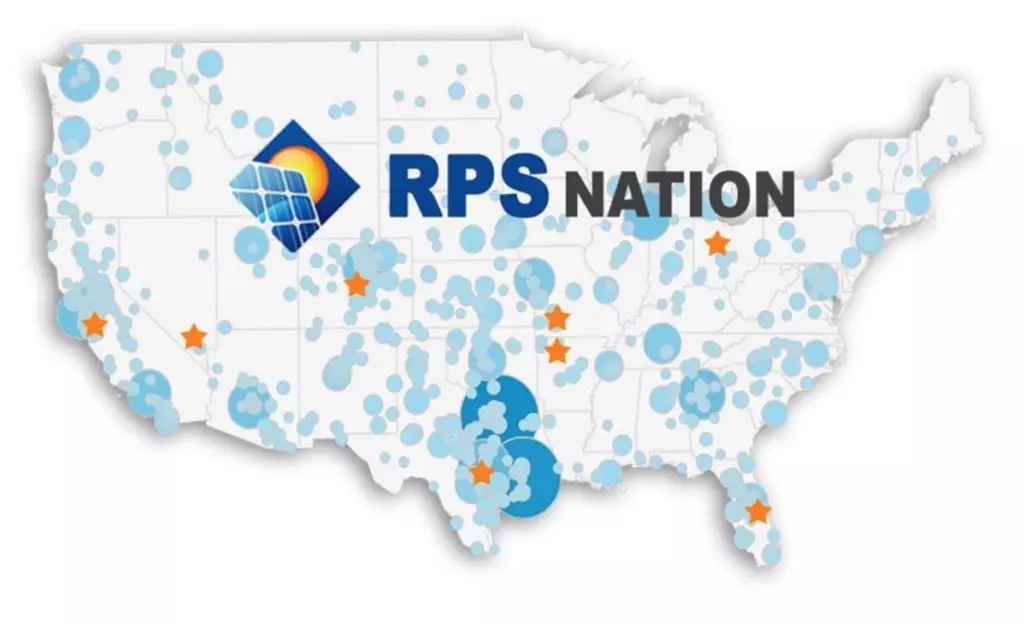
America’s #1 Most Popular
“★★★★★” and 97% Satisfaction
RPS has become USA’s most trusted name in solar water pumping with pumps installed in all US states, we remain steadfast in our commitment to every customer and the humans, plants and animals our pumps serve.
Industry Leading
Lifetime Value, Water Assurance, Warranty Coverage, Dedicated Engineering Support
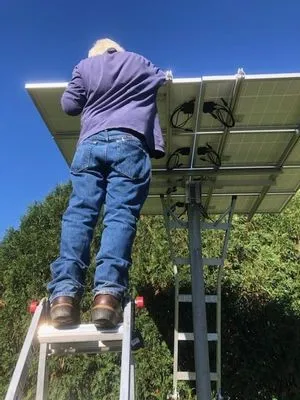
RPS Never Stops Improving
Our engineering culture runs deep with both our owners. Each winter our engineering team comes together to improve our systems even more. Combining customer feedback and R&D from the year, we improve the model offered for the next year without increasing prices. We love solar and we use these systems ourselves. We hope our passion at RPS for solar well pumps is contagious.
RPS Maintains Affordability
With RPS there are no middlemen or distributers so more money stays in your pockets. Systems are self-installed keeping costs down. We honor our veterans (many on our sales team have served) and non-profits with additional % discounts and bulk discounts for larger ranches.
Tradition + Technology = Time
Our customers honor the tradition of ranching. Proudly caring for our animals and our land. We all strive to leave our ranches better for the next generation and we invest our money, blood, sweat and tears to do it. Solar seems to get more popular each year, we think in part because it allows all of us to invest in our time. Less time hauling water, repairing windmills and running generators. At the end of the day that means more time with our families. Amen to that.
NRCS-ready for any US State
For customers looking to work with NRCS to recoup some of the costs of a solar well pump installation, we are here to help. While we can’t guarantee NRCS approval, we have designed our kits to adhere to every documented requirement. All states are a little different but start with the Request for NRCS Documentation form.
OUR PLEDGES TO YOU
- Be a company our Grandfathers would have trusted. The trend of ‘outsourcing’ customer support after the sale is a trend we wholeheartedly oppose. We are an American, family run company and our USA engineers support you before and after the sale.
- No sales pressure. Ever. Nobody in the company is paid on commission. We think this is important. Their role is to make sure they find the right pump for you and your well. If we don’t have a livestock solar pump that will suit your needs, we will help you find a solution elsewhere. Our job is to help get you water.
- Reliable Water. All manufactured products have occasional issues and we can’t claim to be perfect. However, we are proud of a near perfect track record in getting our customers water. This starts with selling a pump sized for your usage with our Water Assurance Plan and promptly addressing warranty issues to get you up and pumping again quickly.
- Give you the power! When you control your ability to pump water out of the ground, whether that is in the field or at home, it makes you more resilient and independent. We are here to help educate you about solar water pumping for livestock and our systems over the phone, with our manual, and our great videos online, so you can install yourself. Take control of your water supply today.
- Fight for the American farmer & rancher. RPS is a David & Goliath story of a small American company fighting against a big European pump corporation that cares more about profits than the longevity of their pumps and the sky-high price for ranchers. Thanks to all our customers for the support of small business vs. foreign corporations trying to profit off some of the hardest working people in our great nation.
The RPS Team
Retire from Running Generators and Hauling Water.
Put the Sun to Work on your Land with RPS for Better Yields and Profits.
RPS Water Assurance Plan™
Ensure you have the right pump, parts, and tools for a fast and successful install.
1. REQUIREMENTS
✔ Well casing diameter of 2” or more, or other water source
✔Good southern exposure
Continue if YES to both
2. ROUGH SIZING
- Type of Irrigation
- Gallons per minute or per day estimates
- Pressure needed

3. FINAL SIZING
- Phone call to verify pump sizing
- Volume & head calculations
- 888-637-4493
4. PLANNING
- Phone call to review install diagrams
- Question, Tools and equipment checklist
- 888-637-4493
5. GET PUMPED
- Order your new RPS pump kit
- 30 Day Money-back Guarantee
- Buy Now
